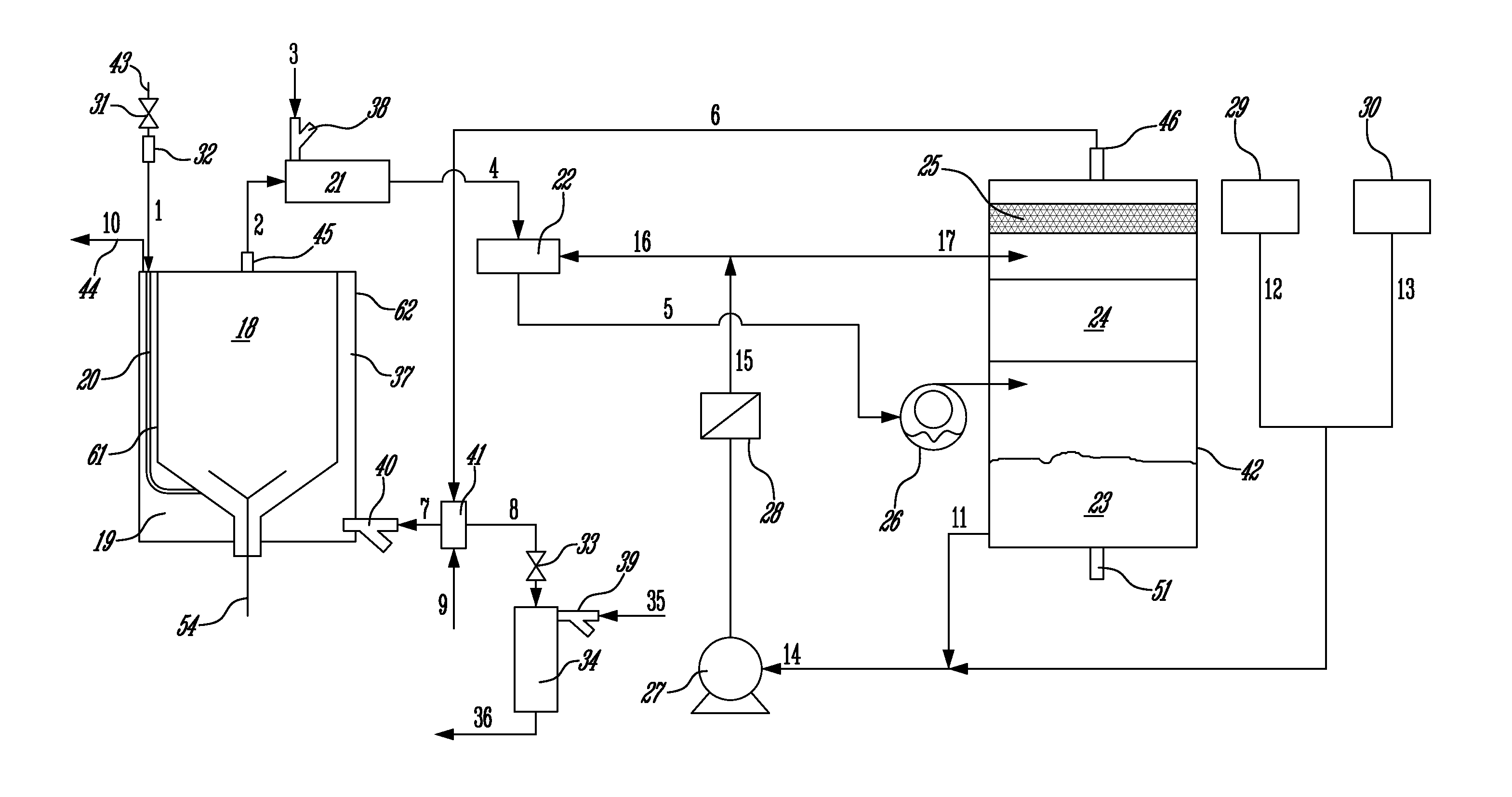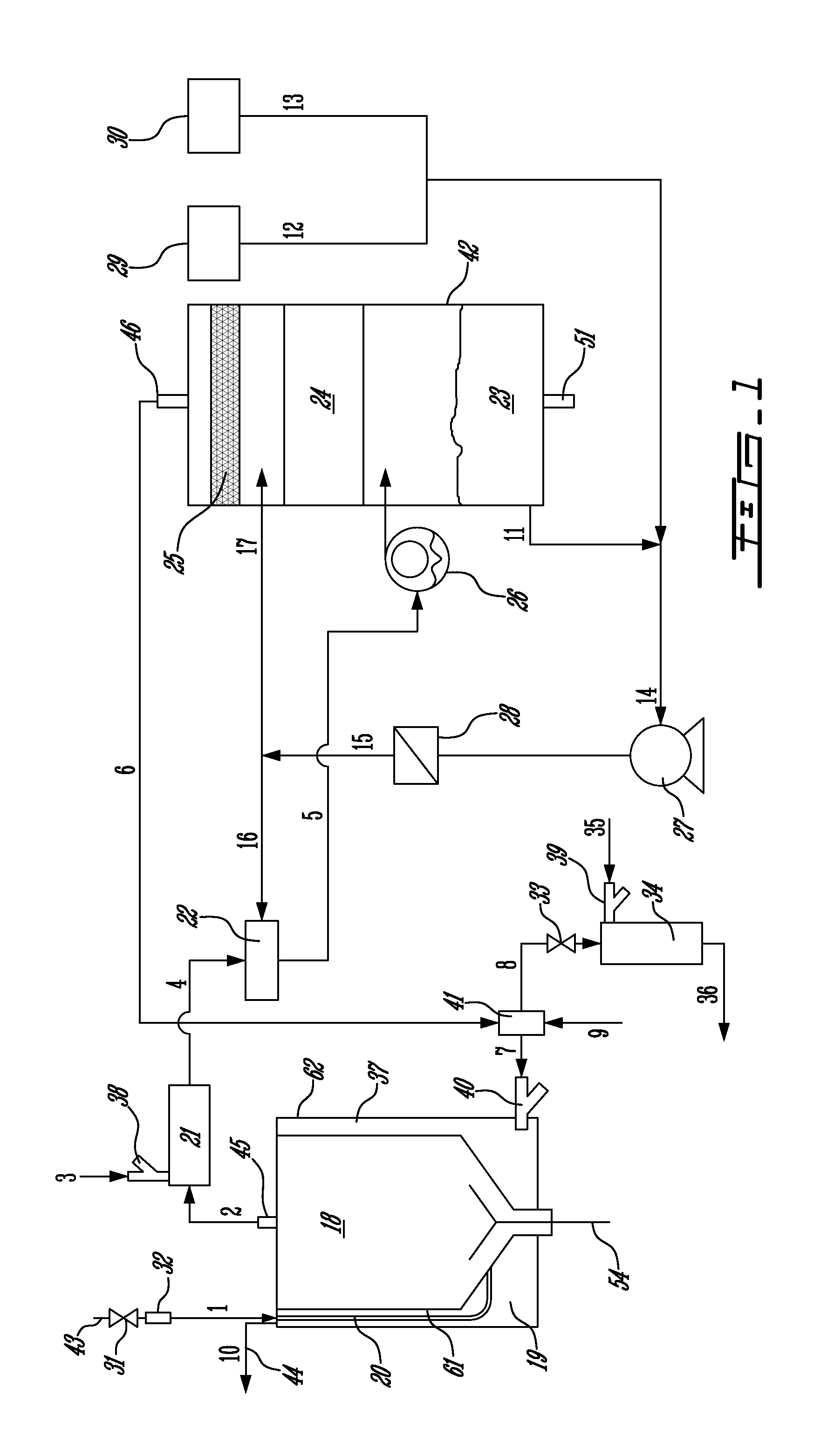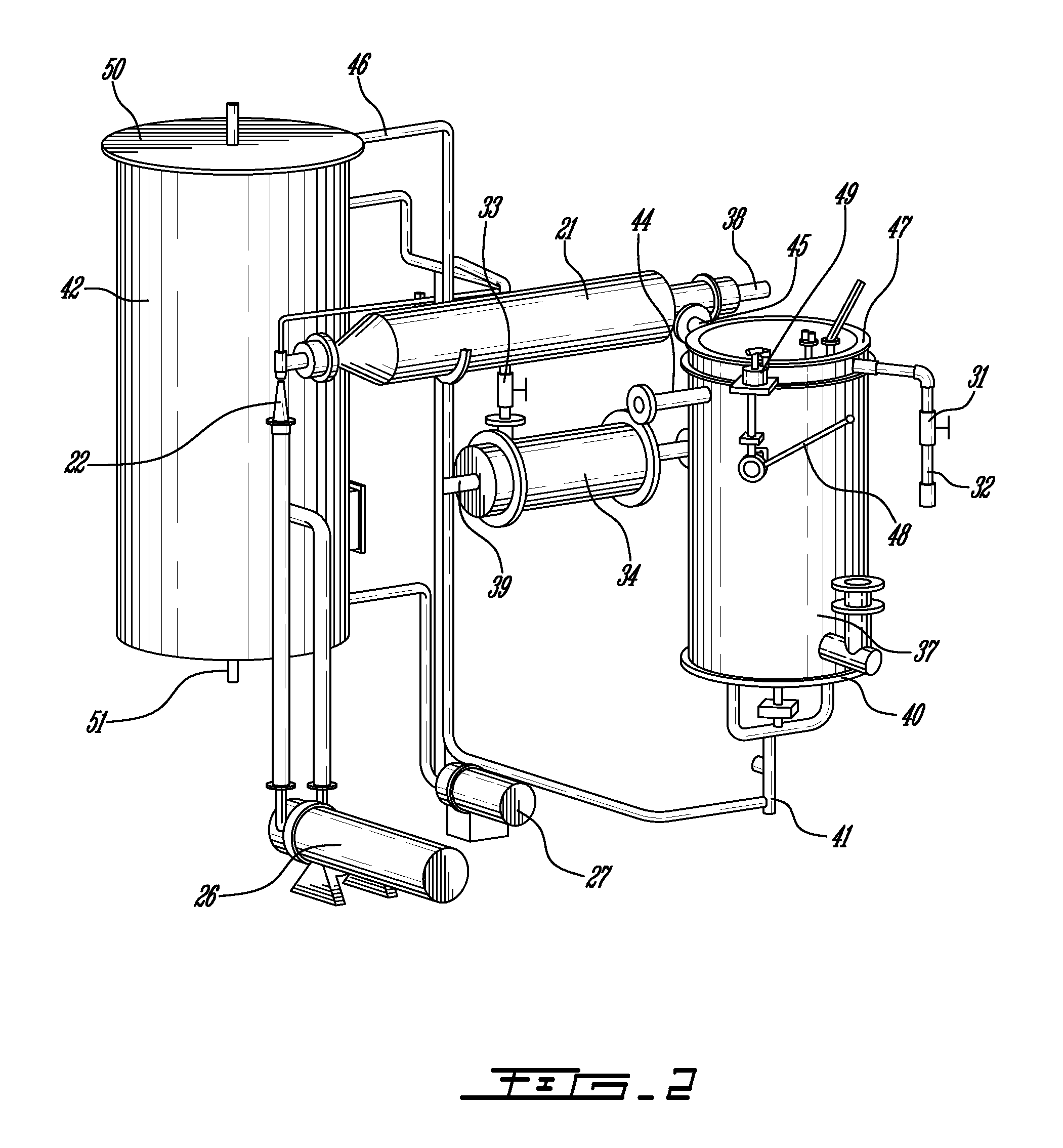Method and apparatus for gasification of organic waste in batches
a gasification method and batch technology, applied in the direction of gasification process details, removal of gas contaminants, combustion process, etc., can solve the problems of limiting the disposal of waste into the sea, affecting the gasification effect of organic waste, so as to reduce the amount of process air, reduce the amount of synthesis gas produced, and prolong the effect of tim
- Summary
- Abstract
- Description
- Claims
- Application Information
AI Technical Summary
Benefits of technology
Problems solved by technology
Method used
Image
Examples
Embodiment Construction
[0064]FIG. 1 shows a block diagram of one embodiment of the MAGS process as disclosed herein. A waste, without any prior pre-treatment, is placed into the primary gasification chamber 18 of the primary gasification reactor 37. A mixture 9 of fuel, such as propane and air, is fed through a combustible gas selector 41 into a dual-fuel burner 40 where it is burned in the primary combustion chamber 19 to start the gasification process. The process air 1 used for the gasification of the waste is fed through the passage 20 between the primary gasification chamber wall 61 and the primary combustion chamber wall 62. The gasification chamber 18 operates under negative pressure (approximately −10″ H2O) created by the use of a water ring pump 26, which pumps the crude synthesis gas 2 out of the gasification chamber 18. The process air 1 is allowed to be drawn into the primary gasification reactor 37 using the pressure difference between the pressure in the primary gasification chamber 18 and t...
PUM
| Property | Measurement | Unit |
|---|---|---|
| temperature | aaaaa | aaaaa |
| temperatures | aaaaa | aaaaa |
| temperatures | aaaaa | aaaaa |
Abstract
Description
Claims
Application Information
 Login to View More
Login to View More - R&D
- Intellectual Property
- Life Sciences
- Materials
- Tech Scout
- Unparalleled Data Quality
- Higher Quality Content
- 60% Fewer Hallucinations
Browse by: Latest US Patents, China's latest patents, Technical Efficacy Thesaurus, Application Domain, Technology Topic, Popular Technical Reports.
© 2025 PatSnap. All rights reserved.Legal|Privacy policy|Modern Slavery Act Transparency Statement|Sitemap|About US| Contact US: help@patsnap.com



